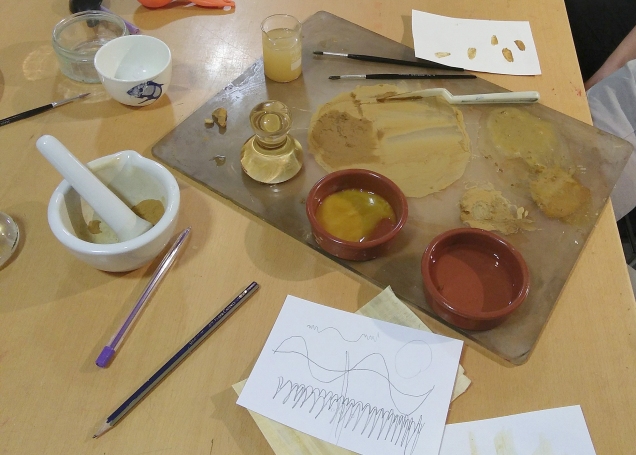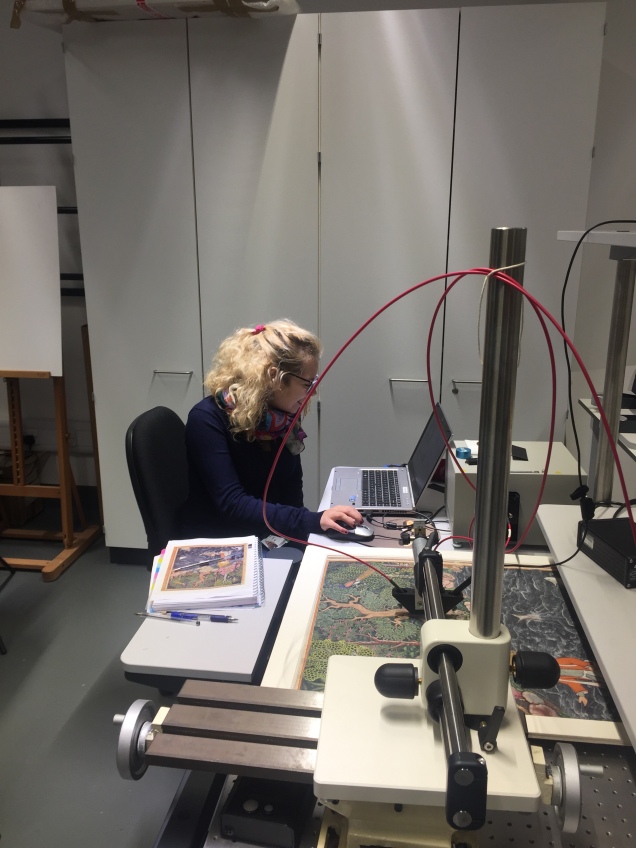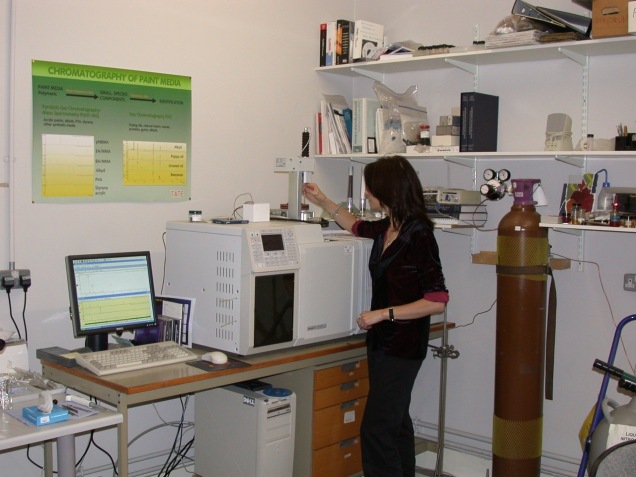On Monday 9th March a group of primary school teachers spent a day working with museum educators and research scientists from the Fitzwilliam Museum and Hamilton Kerr Institute (HKI) to explore different approaches to looking at museum objects and images.
This is the last blog of our British Science Week series and was written by Kate Noble, Paola Ricciardi and Rosanna Evans, with many thanks to Spike Bucklow and to the eight enthusiastic teachers who spent a day at the museum.
Background to the Project
The workshop formed part of the ‘Ways of Seeing’ research project, which aims to stimulate public interest in – and engagement with – the materials and processes involved in the making of objects in museum collections, by bringing together research on the development of visual literacy, non-invasive analytical protocols, visual perception and artists’ techniques. The project was designed with reference to a report, published by the Wellcome Trust in 2014, which identified the need to make science fun and exciting and to support pupils to develop better enquiry skills. It also addresses the need for more high-quality subject-specialist Continuing Professional Development opportunities for primary school teachers in both Science and Art. The teachers’ workshop provided the opportunity to test ideas for a museum-based session for KS2 schoolchildren, aimed at supporting the development of analytical skills essential to both artistic and scientific investigation.

Ways of Seeing builds on the success of Inspire, an exhibition of children’s art made in response to a 15th century panel painting of Cupid and Psyche by Florentine artist Jacopo del Sellaio. An extraordinary 3800 children took part in the project and a selection of their work is currently on display alongside the original painting at the Fitzwilliam Museum. While local schools and teachers were studying the painting in school, the museum’s own heritage scientists and painting conservators were asked to undertake their own technical and scientific research on the panel. Findings from these analyses are included in the exhibition, most prominently as part of a new AR app that invites visitors to look ‘beyond the surface’ at the materials and processes of the Renaissance artist.
Working with the teachers

The session started with an in-depth exploration of Cupid and Psyche in the exhibition gallery, which included drawing, looking at and learning about the painting with museum educator Kate Noble. The teachers also had a chance to look at infrared and X-ray images of the painting, trying to interpret their meaning and brainstorming about the scientific topics that could be discussed with children based on these images.

Spike Bucklow, Director of Research at the HKI, gave us a tour of his Sharpening Perceptions exhibition, which features original paintings alongside historically accurate copies produced by the HKI’s post-graduate students as part of their training in paintings conservation. From the nature and geographic origin of pigments and paint binders – a range of both organic and inorganic, natural and synthetic compounds – to the importance of colour temperature and direction for the light used to illuminate a painting, there was a lot more science to talk about than many of us had thought possible!

We also spent time in the Museum’s Analytical Lab, where Senior Research Scientist Paola Ricciardi talked about a range of non-invasive imaging and analytical methods, which she uses to investigate colours and pigments. Back in the Education Studio, Paola gave a practical demonstration of some of these methods and got an amazed ‘ooooohhh’ from the whole group when demonstrating the three-dimensional texture of paint on a tiny portrait miniature – no more than 4 cm across!

These conversations then fed into a practical session led by museum educator Rosanna Evans, where the teachers worked in small groups, experimenting with paint-making as a form of scientific enquiry. They ground locally sourced earths to make a yellow pigment and tested mixtures made with different paint media (water, egg white and egg yolk), applying them over a range of different surfaces. The best – or, for someone, the worst – part of this process was the screeching sound made by the coarse earth being ground with a glass muller – who would have thought that particle size could ‘speak’ to us so loud and… clear?


The day finished with a stimulating discussion about how these activities and approaches might support the teaching of art and science in primary schools.
Where next?
The day couldn’t have gone better. The lively conversations we had with the teachers and their enthusiastic feedback confirms what we thought all along: truly collaborative cross-disciplinary research has immense potential to be the starting point for developing user-led projects with practitioners, and to explore different pathways to impact for object-based research. In the words of one of the teachers, “I don’t think there is any part of the curriculum that you couldn’t bring into this!” We are now looking forward to inviting the teachers back to the museum with their classes in the Summer term to take part in our new Ways of Seeing workshops for KS2 children.


















